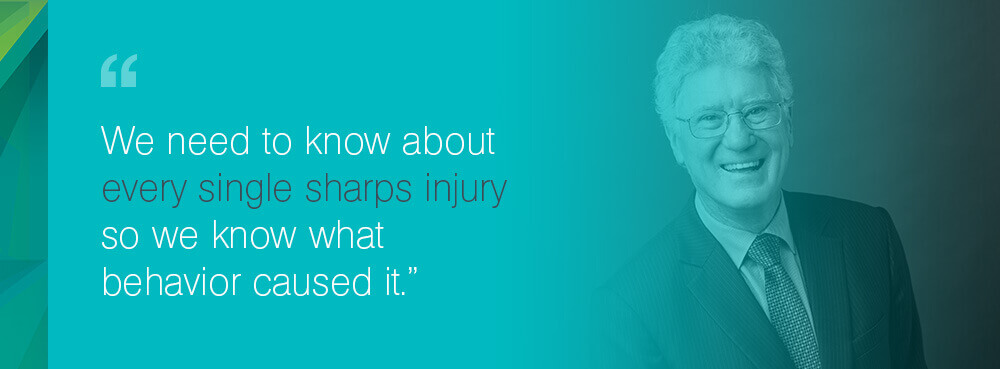Terry Grimmond: Microbiology and Sharps Injuries

In April of 2018 we hosted our It’s Not OK event to bring the gravity of sharps injuries in healthcare back into the conversation. With a variety of ever-increasing occupational health risks and infection concerns for clinicians, sharps injury reduction and prevention absolutely must remain a priority.
Dr. Terry Grimmond was one of our guest speakers and gave insight into the microbiology of sharps injuries – and why we must be vigilant in our efforts to make healthcare safer.
Why are sharps injuries such an important issue to address; don’t we have a cure?
“My answer would be: a cure for what? People tend to think there are the top 3 pathogens: HIV, Hep B, and Hep C. But actually there are 60 different pathogens that can be transmitted from a needlestick injury; so no we don’t have a cure for sharps injuries.”
What is one strategy that could reduce sharps injuries?
“I don’t think there is just one strategy – when Safety Engineered Devices (SEDs) were made law, injuries fell 38% in one year. So, people thought that was the solution – but then it stopped falling. We’ve only fallen 11% in the US in the 16 tears following the legislative change to use SEDs. We now know there isn’t one strategy. SEDs alone don’t work without really thorough education and training: education as to why and training as into how. Competency-based training that proves you retained the information is imperative.”
If we’ve had safety engineered devices for over 20 years, why are sharps injuries not declining?
“There’s a number of reasons. In 2003, 87% of clinicians said that they were moderately concerned about safety in their job, and now it’s 65%. What we’re trying to do with Daniels is to tell people: don’t be complacent when it comes to your safety. Another issue is we’ve done surveys that show that not all people use SEDs. The research indicates that not everyone is using them when they’re available and even when they do use them, my research says, that 22% were not being activated properly. Sharps injuries need to be taken as seriously as any other occupational health risk like slips, trips, and sprains.”
What do you think is preventing healthcare workers from reporting needlestick injuries?
“There was an excellent paper over a 12-year period and they actually asked those who didn’t report why they didn’t. The main reason was inconvenience, time, and that they were rushed. The other reason for not reporting is people just saying or having the attitude of “oh it was just a scratch.” “It wasn’t a big deal, just a nick, didn’t see any blood.” People do give these reasons. People wrongly assume that we can handle all the repercussions of a sharps injury or infection now and have cures for it all – we don’t. We need to know about every single sharps injury so we know what behavior caused it. We need to know the behaviors to get the overview of how needlesticks are caused and to prevent them.”
Let's Talk!
Your time is valuable, and we don’t want to play hard to get. You can either phone us directly on the details listed on our contact page, or feel free to fill out this short form and one of our team members will get back to you as quickly as possible.
